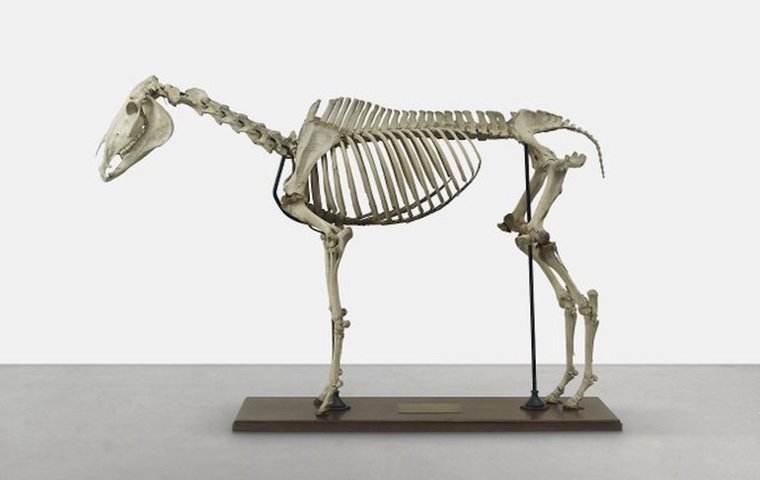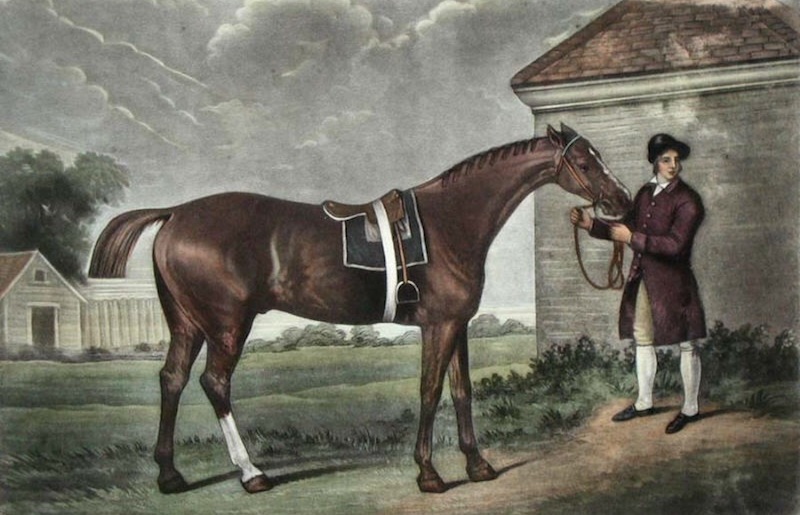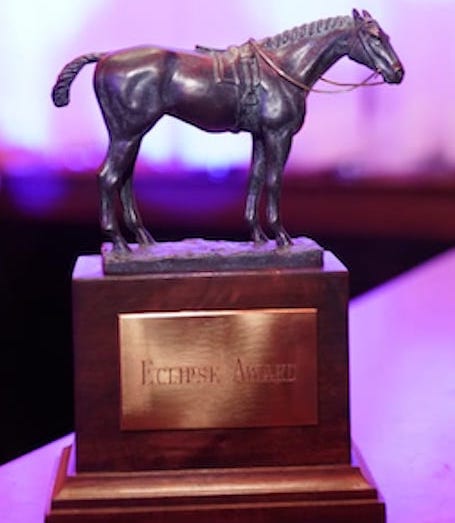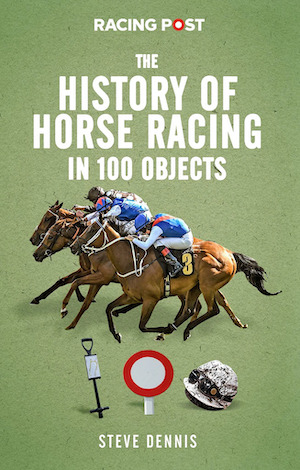
An extract from Steve Dennis’s wonderful book, A History of Horse Racing in 100 Objects, an ambitious work that embraces the vast sweep of a global sport, condensing its heart and soul into a century of milestones that connect its ancient past and its vibrant present.
Dem bones, dem bones. Visitors to the Royal Veterinary College in Hertfordshire may come face to face with the earthly remains of the remarkable Eclipse, for here on display are the clean bones of the almost complete skeleton of one of the greatest horses in history.
When Eclipse died of colic in 1789, he was autopsied in an attempt to discover the reason for his superlative ability. It was found that he had a very large heart, which went a long way to explaining his athletic prowess, and thereafter his bones were reassembled and put on display as a curiosity.
Later, his skeleton was periodically stripped down, transported around the country and rebuilt, with the consequence that along the way a few of the bones were lost and replaced by suitable bones from other horses. An inspection of the skeleton also reveals that his hooves are missing.
 Eclipse (foaled 1764) was a true phenomenon of a horse. Born in the light and shade of a solar eclipse – naming him was a straightforward task – he was a surly individual with one long white sock, prone to galloping with his head low to the ground like a man looking for loose change in the street.
Eclipse (foaled 1764) was a true phenomenon of a horse. Born in the light and shade of a solar eclipse – naming him was a straightforward task – he was a surly individual with one long white sock, prone to galloping with his head low to the ground like a man looking for loose change in the street.
He didn’t begin his career until he was five – that was unexceptional for the era – but was odds-on for his debut after news of his private trial became public knowledge. He retired unbeaten and unextended in 18 races, many of them walkovers for such was his reputation and his brilliance that few owners wished to start their horses against him.
His name has echoed down the ages, not least for the phrase he unwittingly bequeathed to the language. His first race was the Noblemen and Gentlemen’s Plate at Epsom in May 1769, a race run in four-mile heats, and following Eclipse’s victory in the first heat the Irish gambler and lovable rogue-about-town Dennis O’Kelly bet that he could put the horses in the second heat in the correct finishing order. He called out ‘Eclipse first, and the rest nowhere’, and for that seemingly unlikely outcome he received good odds.
To be ‘nowhere’ meant finishing more than 240 yards (a measure known as a ‘distance’) behind the winner, and was a very rare occurrence. But rarer still was a horse like Eclipse, and he landed O’Kelly’s bets with room to spare, distancing his rivals; O’Kelly later bought Eclipse with his winnings. The words ‘So-and-so first, and the rest nowhere’ have entered common parlance as an illustration of complete dominance, even though those who use them may never have heard of the racehorse.
When his career came to an end, through lack of competition as much as anything, Eclipse was markedly successful as a stallion. His most influential son was Potoooooooo (the horse was supposed to be named Potatoes, but his semi-literate groom scrawled his name on the stable door phonetically – Pot and eight Os – and it stuck) who helped extend the afor ementioned golden thread of bloodlines that led from the Darley Arabian to Phalaris and then on into modern pedigree saturation.
ementioned golden thread of bloodlines that led from the Darley Arabian to Phalaris and then on into modern pedigree saturation.
He is assured of immortality within the pages of the record books, but a paragon of the Turf such as Eclipse naturally has commemorations aplenty.
The Eclipse Stakes at Sandown Park is one of the most important Flat races of the season in Britain, and the annual Eclipse Awards in the US recognise the champions of the sport in categories that include the hugely prestigious Horse of the Year. And, of course, we can view his skeleton.
It may seem a little macabre to modern sensibilities but the occupants of the late 18th century were less fastidious, and it is certainly striking to see this great equine celebrity in his display case.
Few other horses have been preserved in this way, although the skeletons of (aptly) Potoooooooo and 1933 Derby winner and multiple champion sire Hyperion are exhibited in the National Horse Racing Museum.
So there Eclipse stands, on tiptoe, on the tips of his pastern bones, for his hooves are missing. They were removed at some point post-autopsy and converted into inkwells, as slightly ghoulish keepsakes for racing aficionados.
As is often the way, however, entrepreneurial zeal took wings, with the result that there appear to be five hoof-inkwells attributed to Eclipse in circulation. Hardly surprising, in that case, that he could run so fast.
 • The History of Horse Racing in 100 Objects by Steve Dennis is available here
• The History of Horse Racing in 100 Objects by Steve Dennis is available here
Jay Hovdey's Favorite Racehorses: Ancient Title – ‘There were so many times he took the breath away’
The Special Ones: Happy (official) birthday to the two last known Secretariats
View the latest TRC Global Rankings for horses / jockeys / trainers / sires


